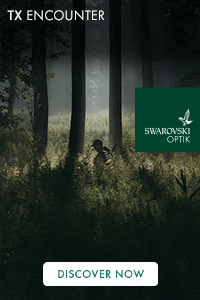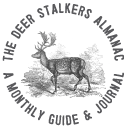
What to expect from your Deer Stalking month by month. Enter your email address below to receive the Almanac:
Deer Species: Chinese Water Deer (CWD)

Having been introduced from China to the UK around 1900 by the Duke of Bedford CWD are one of the oldest known species of deer and possibly date back 35 million years.
Generally a solitary deer though capable of forming small family groups, CWD can be found mainly in Norfolk, Suffolk and Cambridgeshire. Though doing well their specific habitat requirements of reed beds have meant that they have not spread far beyond their initial release site of Woburn Abbey.
CWD are unique in so much as they do not grow typical antlers but instead exhibit large sharp tusks. They are a small deer with a live weight of up to 20kg and stand around 50cm at the shoulder. Features include black button eyes and large hair filled ears, The hind legs are typically longer than the fore casuing the rump to appear higher than the fore quarters.
For Chinese water deer the rut is in December during which time the Bucks take up territories marked by scrapes and scent markings.
Potentially Chinese Water Deer have a very high reproductive rate due to the fact that the Doe can give birth to litters of up to seven kids however most Does will have two or three kids which are born around May - June.
Back to Overview
Deer Species: Fallow
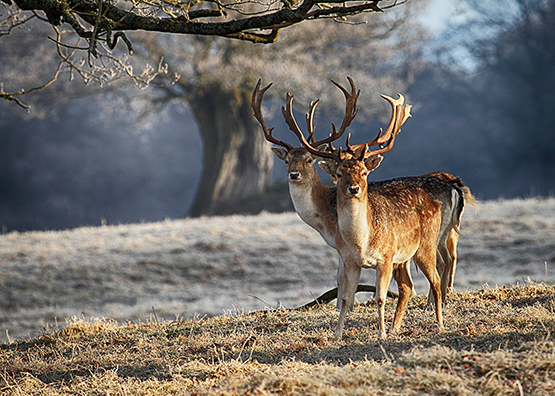
This widely recognisable deer is often attributed to Parks due its highly attractive appearance and the large palmated antlers of the Buck.
Of the variety of Fallow likely to be encountered, (Menil, Common, Melanistic and white) it is perhaps the Menil variety with its light beige coat and white spots that is most highly regarded.
Fallow (Dama dama) can be found across the UK, however their distribution is predominantly in the southern counties of England and across much of the Midlands. Bucks can grow up to 95kg in favourable conditions and Doe's in excess of 50kg.
Fallow are a herding deer and as such are primarily grazers. They can however also be associated with tree damage and are often responsible for considerable crop damage.
The Fallow rut is in October during which time the bucks will 'wallow', take up rutting stands and can be herd groaning in an attempt to attract mates. Antler shedding by the buck is from April to May.
The Does have single fawns in June and July during which time they become solitary before later re joining the family group.
Back to Overview
Deer Species: Sika

Sika deer (Cervus nippon) originate from Japan and are very closely related to our native Red Deer. Since their introduction to Britain in the 19th Century they have remained largely localised to Scotland with a few noticeable exceptions in Dorset, East Anglia and Kent.
A herding deer, Sika are similar in size to Fallow however have been known to mate with our native red deer causing frequent Sika/Red hybrids. Both the Hind and the Stag are distiguishable from a light colourde 'V' across their brow and white metatarsal gland on the outside of the hocks.
Sika stags will thrash and fray trees and are noted for causing extensive damage to trees from their characteristic raking of bark also known as "bole scoring".
Spending most of the year in single sex groups though coming together for the Rut, sika are secretive deer and have a wide range of calls including an unusual and characteristic whistle.
For Sika the rut is usually August - September and for the stags antler shedding usually occurs around March extending to as late as May. The Hinds typically give birth to a single Calf in May and June.
Back to Overview
Deer Species: Roe
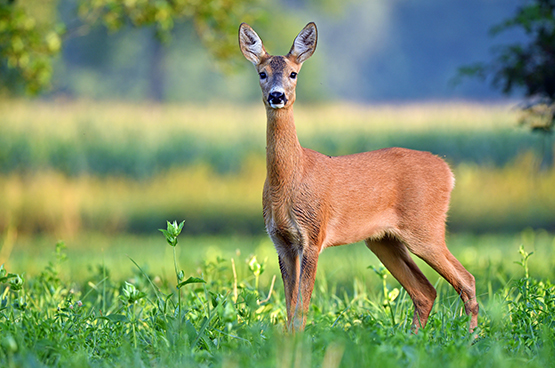
This native, elegant and long legged Deer can be found across much of the UK.
Roe Deer (Capreolus capreolus) tend to be found in groups rather than herds and their ability to blend into woodland environments make them difficult to spot and able to exist in relatively small areas of cover unnoticed.
In contrast to many other deer antler eruption amongst the Bucks occurs over the spring and early summer, the quality of which in the UK is widely seen as a credit to our British Deer Managers and a draw for trophy hunters from around the world.
Roe are a territorial animal and can live up to 12 years in the wild. They stand around 70cm at the shoulder however despite their appearance they are light framed with bucks typically weighing no more than 30kg on the hoof for a really good specimen.
In summer Roe are typically a foxy red colour turning to dark brown in the winter. Although they have no tail the does display a tuft of hair in winter coat allowing them to be distinguished from bucks during winter months when the bucks have cast their antlers.
Unlike other UK species of deer Roe Does typically give birth to twins, the does are also unique in that they have a process of delayed implantation of the fertilised ovum into the womb. This means that despite the rut being around July/Aug the doe is not visibly pregnant until at least January the following year.
Back to Overview
Deer Species: Muntjac
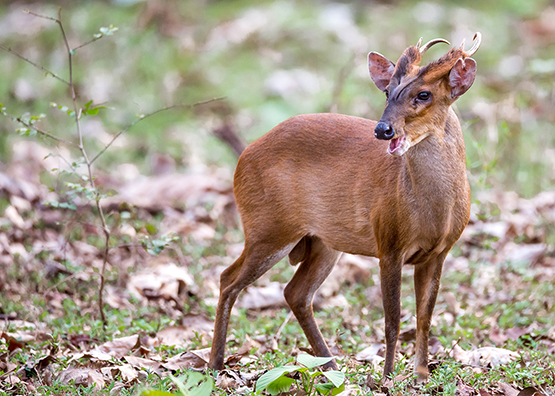
Muntjac are a Asiatic species of deer first introduced to the UK by the Duke of Bedford in 1893. A series of deliberate releases in the 1940's and 1950's have resulted in Muntjac deer now being widely spread across much of southern England and the Midlands.
Sometimes known as the 'Barking Deer' Muntjac with their slightly hunched pig like appearance are unique amongst UK Deer Species in that they are able to breed throughout the year, the Doe being able to give birth to a single fawn on average every 7-9 months.
Despite its dislike of cold enviroments the Muntjac has adapted well to the UK and can now also be found in many sub urban surroundings. Their love of deciduous shrubs combined with their secretive nature and ability to find a way through almost any type of fencing make them the common enemy of many gardeners.
Standing up to 50 cm at the shoulder and with a live weight of 10 - 20kg Muntjac are a suprisingly hardy deer and can live up to 16 years in the wild.
Bucks are distinguishable from the Does by their antlers which are shed between May - July and by the dark 'V' visibale on their foreheads, Does tend to be a little smaller especially around the neck and possess a dark coloured diamond shape on their foreheads. Both Doe and Buck have wide short tails which become errect when alarmed.





